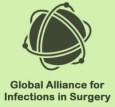Hernia repairs are the most common elective abdominal wall procedures performed by general surgeons. The use of a mesh has become the standard for hernia repair surgery.
The use of a mesh has become the standard in hernia repair surgery worldwide due to the reduced rates of recurrence and technical ease of the operation. However, mesh-related complications have become increasingly more frequent. Post-operative mesh infections are rare but troublesome complications that cause considerable morbidity and necessitate mostly mesh removal. Antibiotics and mesh-saving operations are not generally sufficient to eradicate the infection in the majority of cases.
The type of synthetic meshes has grown exponentially by time and includes a variety of shapes, sizes and structural types. From the multitude of materials used the concept of ideal mesh has not found yet because each has advantages and disadvantages. The most commonly used prostheses are those of polypropylene. The same bacterial strains exhibit different adherence patterns to different mesh. Physicochemical properties of the mesh determine the extent of bacterial adhesion and biofilm production. Chemical composition, electric charge, hydrophobicity, surface roughness and porosity of the biomaterial surface may condition its bio-receptivity.
The possibility of a mesh infection occurring weeks or even years after hernia repair, should be considered in any patient with fever of unknown origin, or symptoms and/or signs of inflammation of the abdominal wall following hernia repair. The reported incidence of mesh infection following hernia repair has been 1%–8% in different series, and this incidence is influenced by underlying co‐morbidities, the type of mesh, the surgical technique and by the infection prevention strategies used to prevent infections. Diagnosis of infected mesh is not straightforward and need to be distinguished from superficial incisional surgical site infections. Superficial incisional surgical site infections occur in the early postoperative period and may not be influenced by mesh implantation. Patients with deep mesh infections may tend to be indolent and they may be initially underestimated, and once they are chronic patients may present with sinus formation. The diagnosis of chronic mesh infection should be based on its clinical presentation but requires radiological studies, including ultrasound (US), computerized tomography (CT) and on occasion scintigraphy may be useful too.
The usual causative micro-organisms associated mesh infection are Staphylococcus aureus including methicilin-resistant Staphylococcus aureus (MRSA) and Staphylococcus epidermidis, group B Streptococcus and Gram-negative bacteria including Enterobacteriaceae. Infection with Staphylococcus aureus may be associated with both endogenous source as it is a member of the skin and with contamination from environment, surgical instruments or from hands of health care workers. Infection prevention strategies associated with antibiotic prophylaxis has partly been helpful in overcoming mesh infections. The aim of infection prevention strategies and prophylactic antibiotic administration is to minimize bacterial count in the wound and decrease adherence to the mesh and prevent biofilm production; thereby blocking the key step for mesh infection.
Bacterial adherence and biofilm formation on the surface of synthetic materials are essential steps in the sequence leading to mesh infections. The first stage of mesh infection is bacterial adherence to the prosthesis. The result of adherence to hernia prosthetics is the formation of the bacterial biofilm. Bacterial adhesion is the result of the interaction between the bacteria and the mesh. The initial bacterial adherence to the mesh is rapid and reversible.Then, an irreversible adherence ensues via adhesins resulting in secretion of an exopolysaccaride from the bacteria, the biofilm. Biofilms produced by the bacteria have a pivotal role in mesh infection. Once biofilm is formed, complete removal of the implant is nearly mandatory for the eradication of the infection. Several studies have documented in vitro that multiple species of bacteria can attach to prosthetic mesh surfaces and form biofilms including coagulase-negative staphylococci, Stapylococcus. aureus, Escherichia coli and Pseudomonas aeruginosa. Embedded in self-secreted extracellular polymeric substances, biofilm can provide bacteria an effective barrier against host immune cells and antibiotics. Biofilms have been documented in association with a wide variety of implanted materials, such as central venous catheters, urinary catheters, heart valves, orthopedic joint prostheses and internal fixation devices and also in non-absorbable meshes. The nature of biofilm structure makes micro-organisms difficult to eradicate and confer an inherent resistance to antimicrobial agents. Although, several studies have shown that in certain instances a conservative approach may be successful for salvaging a contaminated mesh, in most cases antibiotics and wound drainage are not sufficient to eradicate the infection. If conservative treatment fails, the complete surgical removal of the mesh is mandatory. A conservative surgical approach including abscess drainage, incomplete sinus excision or partial mesh excision may fail and may result in recurrent mesh infections.
The use of a prosthetic mesh to repair a tissue defect may produce a series of post-operative complications, among which infection is the most feared and one of the most devastating. When occurring, bacterial adherence and biofilm formation on the mesh surface affect the implant’s tissue integration and host tissue regeneration, making preventive measures to control prosthetic infection a major goal of prosthetic mesh improvement.
